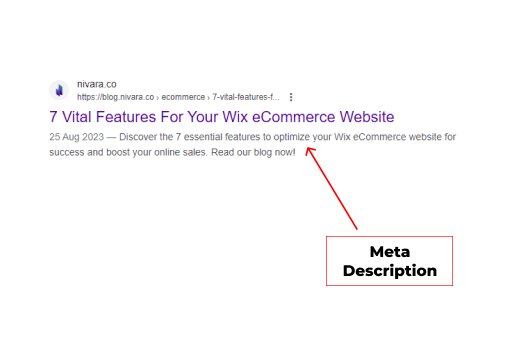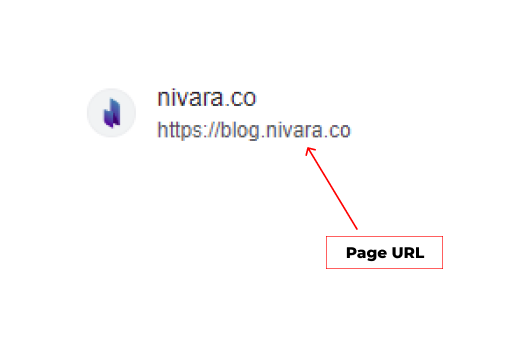If you want to enhance your website’s search engine ranking, then you’ve come to the right place. In this comprehensive guide, we’ll discuss On Page SEO, a vital aspect of website optimization. With so many updates and changes to search engine algorithms, staying up-to-date with the latest techniques is important. Our guide for On-Page SEO in 2024 will help you achieve that and boost your website’s visibility on search engines.
So, let’s delve into it!
What Is On Page SEO?
It is also known as on-site SEO, which includes optimizing several elements of your website to enhance its search engine rankings and entice new visitors. This involves optimizing content, site architecture, and HTML elements to make your website more appealing to search engines and users.
Google’s algorithm considers three primary factors when evaluating websites: on-page SEO, off-page SEO, and technical SEO. Improving your on-page SEO can boost your website’s search engine ranking and increase organic traffic.
Why Is On Page SEO Important?
Proper on page SEO is crucial as it enables search engines to analyze your site and content to determine when a user’s search is relevant. To provide users with relevant results, Google constantly updates its algorithm to understand better what a user is looking for. Your website must also keep up with the latest developments in Google’s algorithm.
It is essential that your site’s content, both visible (media, images, text) and hidden (metadata, HTML), is optimized according to the latest practices used by search engines like Google and Bing. This optimization will help search engines comprehend your website better and rank it higher.
Key Elements of On Page SEO
The elements of on page SEO are categorized into three main types:
- Content Elements
- HTML Elements
- Site Architecture Elements
CONTENT ELEMENTS
- Keyword Research
To create high-quality content, one of the first things you must do is select relevant keywords and topics. You can conduct keyword research by searching Google for terms and see what comes up for competitors and other sites. You can also use tools like Ahrefs, Google Keyword Planner, SE Ranking, and UberSuggest.
When you do keyword research, consider how your page content relates to the buyer’s journey and visitors’ search intent. This will impact how you use your keywords and your content type.

- Visual Content
For many reasons, visual content — like images, graphics, and charts — is important on-page SEO.
Images can improve the visual appeal and engagement of web pages. They help make content more scannable and easier to digest. Moreover, optimizing images with alt tags can help drive traffic from image search results.
HTML ELEMENTS
HTML elements are a web page’s building blocks defined in the source code.
- Page Titles
Page titles, called title tags, are crucial for improving your website’s search engine optimization (SEO). These titles give visitors and search engines a clear idea of what they can expect on the corresponding pages.
To ensure that your pages rank for the right intent, including the focus keyword for each page in the title is essential. Try to incorporate the Keyword as naturally as possible.
- Headers
Headers, also referred to as body tags, are HTML elements that include <h1>, <h2>, <h3>, and so on. These tags organize your content for readers and enable search engines to differentiate the most critical and relevant part of your content, depending on the user’s search intent.
- Meta Descriptions
When you search for something online, you see a title and a short description under it. This short description is called a meta description. Although it doesn’t affect your website’s ranking on search engines, it can determine whether a user clicks on your page. Therefore, optimizing your meta descriptions as part of your on-page SEO strategy is important.

In addition, when your content is shared on different social media platforms using structured markup, the meta description can be displayed. This can help increase click-through rates from such platforms.
- Image ALT Text
Alt-text for images is comparable to the SEO for text content. It entails providing information about your images to Google and other search engines. This is important because search engines now display almost as several image-based results as text-based ones. Consequently, potential customers may come across your website through your images. Therefore, it is essential to include alt-text descriptions for all your images.
- Structured Markup
This, also known as structured data, is a technique that entails adding specific code to your website’s source code to help search engines like Google better understand the different elements of your content.
Structured markup is often used to create featured snippets, knowledge panels, and other content features you may see when searching for something on Google. It also ensures that the information from your webpage is displayed correctly when people share it on social media platforms.
SITE ARCHITECTURE ELEMENTS
Website structure affects search engine crawling. Proper site architecture makes content indexing easier.
- Page URLs
Your page URLs should be easy to comprehend for both people and search engines. They are also crucial when maintaining a consistent site hierarchy as you add subpages, blog posts, and other internal pages.

For instance, in the above URL, the blog is the sub-domain, and Nivara is the domain name.
- Internal Linking
Internal linking is all about adding links to helpful pages on your website. This helps readers navigate to other pages and stay on your website longer. When visitors stay on your site for longer, it signals to Google that your website is valuable and useful. This is important for on-page search engine optimization (SEO).
The longer visitors stay on your site, the more time Google has to examine and index your site pages. This means that Google can learn more about your website, which may help increase your website’s ranking on search engine results pages. To make the most of internal linking, hyperlink to other related pages on your site using simple language that is easy to understand.
- Mobile Responsiveness
Websites should be optimized for faster mobile speeds, even for desktop searches. This means ensuring your site is easily readable and navigable on mobile devices. You can use Google’s Mobile-Friendly Test tool to check if your site is mobile-friendly. Remember that mobile responsiveness is important, so choose a website hosting service, site design and theme, and content layout that works well on both desktop and mobile devices.
- Website Speed
Ensuring your site loads quickly on mobile and desktop devices is essential. This is especially crucial for on page SEO, as page speed is a significant factor.
Google prioritizes providing a good user experience, and slow-loading websites can make visitors leave quickly – which Google takes into account. Additionally, site speed can affect your conversions and overall return on investment.
You can use Google’s PageSpeed Insights tool to check your website’s speed anytime.
Conclusion
On-page SEO is still an essential part of digital marketing in 2024. By incorporating key elements such as optimizing your content for relevance and readability, providing a seamless user experience, and optimizing for mobile, you can boost your online visibility and search rankings.
Remember, on page SEO is an ongoing process that needs attention to detail and adaptation to the ever-evolving algorithms of search engines. Stay informed and let your on-page SEO strategies propel your website to new heights.

